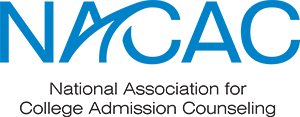Students are back in school, fall's begun, and parents may have questions about the PSAT, scoring, differences between the PSAT and SAT, and how the movement toward digital testing will affect future students. We're sharing everything you need to know and more!
What is the PSAT?
The PSAT, as the name suggests, is a preliminary SAT, although the letters don’t technically stand for anything. The PSAT, administered by high schools and one of the College Board exams, can be offered in 8th, 9th, 10th, or 11th grade, and they have different names: the PSAT 8/9/10 are labeled according to the grades in which they’re offered.
The PSAT offered in grade 11 is the PSAT/NMSQT (PSAT/National Merit Scholarship Qualifying Test). We’ve written a bunch about National Merit, what it means, and what the scholarships associated with National Merit are, so please read up on that first. We do NOT recommend that students sit for the PSAT in 8th or 9th grade for a number of reasons, including:
- Very few students have taken all of the math—let alone finished Algebra I—for the test. The PSAT covers math through Algebra II, meaning pre-Algebra, Algebra I-II, and geometry.
- The majority of 8th-9th grade students simply don’t know basic trigonometric ratios or how to set up systems of equations-word problems (through no fault of their own).
Generally, standard high school curricula do not align with the College Board SAT suite of tests for those grades.
The PSAT/NMSQT (the PSAT offered in junior year) can be offered during a school day from October 2–October 31, 2023 and will be given on one Saturday in October; students should check with their college counseling offices to see what their school is doing early on in junior year. Some schools, in fact, send out PSAT/NMSQT registration information the summer between sophomore and junior year, so pay attention!
What if my student misses the PSAT/NMSQT?
If your child misses the PSAT/NMSQT registration and/or test, there is an alternate entry method for consideration in the National Merit scholarship qualification. Regardless, students who are invited to continue in the Finalist process will need to submit an official ACT or SAT score for verification purposes.
What’s the biggest difference between the previous paper and pencil version of the PSAT and the digital version?
The digital PSAT covers the same content as the previous PSAT (and SAT for that matter). So a lot is staying the same. That said, the test is now being offered on a computer/laptop/tablet provided by the student. Students can request devices from their school or the College Board if they need them. We’ve been following the digital testing launches closely for nearly two years now, and you can read our initial take on the digital test announcement here as well as some more recent updates here.
With the digital test launch, the PSAT is now the same length as the SAT, and they both clock in at roughly 2.5 hours including the break (under standard time and conditions). The PSAT may be students’ first exposure to a lengthy standardized exam. Students receive a Reading/Writing section score and a Math section score. The scoring of the PSAT is different from that of the SAT: students can earn 160-760 per section (on the PSAT 10 or PSAT/NMSQT) instead of 200-800 (on the SAT) so the highest a student can get is a 1520 (vs. 1600 on the SAT). The PSATs 8/9 are scored on an even lower scale. That said: the PSAT scoring is vertically aligned with the SAT. Whatever a student gets on the PSAT is the score they’d get had they taken the SAT instead that day. Students should guess on the PSAT, just as they should on the SAT, since there’s no penalty for guessing.
The scoring for the PSAT/NMSQT or PSAT10 is different from that of the SAT. Here are some differences to be aware of:
| PSAT | SAT | |
| Scoring | 160-760 per section (on the PSAT 10 or PSAT/NMSQT) | 200-800 per section |
| Total Achievable Score | 1520 | 1600 |
The PSATs 8/9 are scored on an even lower scale. Since the PSAT doesn’t contain some of the upper-level math questions and there are fewer questions, the scoring is out of a lower scale. That said: the PSAT scoring is vertically aligned with the SAT. Whatever a student gets on the PSAT is the score they’d get had they taken the SAT instead that day. Students should guess on the PSAT, just as they should on the SAT since there’s no penalty for guessing.
What is a Good PSAT Score?
This is a good question with lots of answers! In which grade is your student taking the PSAT?
Scoring at the 50th percentile on the PSAT 8 is very different from scoring at the 50th percentile in 10th grade. Also, which percentile are you referring to? The more accurate percentile is the User Group Percentile, which is typically lower than the Nationally Representative percentile. Please do not add 100 points to your PSAT score to see what you think the SAT score might be—this is a myth, and you can read more about it in our Testing Myths Busted blog.
Should My Child Prepare for the PSAT?
Well, again, that depends on when they’re taking it and for what reason. If the student is taking the PSAT 10, for example, as a baseline score to compare with, say, the PreACT and determine which test they might want to take, then no, they should NOT prepare for it.
If your child did really well on their (practice) PSAT 10, and they might be within National Merit striking distance, then it might be worth completing a few hours of targeted 1:1 tutoring or a PSAT workshop like the ones we offer prior to testing in the fall of junior year.
What Do We Do When We Get Our PSAT Scores Back?
For PSAT 8/9 students, you do nothing other than move forward with your academic classes and extracurricular activities & passions so that your academic profile is developed in a meaningful way.
For PSAT 10 and PSAT/NMSQT students, the PSAT is a great way to ease into test prep, including figuring out which test (ACT or SAT) is better, whether it’s worth preparing for such a test, and, if so, when you should begin prep. Ideally, we do like all of our students to take free practice diagnostic tests of full-length ACTs and SATs around the end of sophomore year, but if a student takes a PSAT, we can usually make recommendations, especially if they’re open to sitting for one of our full-length free ACTs for comparison.
Once we get those scores, you can schedule a free consultation with one of our test prep experts to discuss which test, when to test, and what type of tutoring is most appropriate for your student. You can look at concordance charts to see roughly what your score is comparable to on the ACT. After getting the PSAT results back, students can also connect them to Khan Academy to get targeted and recommended practice exercises, no matter which tests they’re taking moving forward. I
How does the paper and pencil PSAT affect my child taking the digital PSAT or SATs?
Here are more specifics for you and your student by class year:
If you’re Class of 2025, you MAY wish to take a paper & pencil ACT or SAT by the end of 2023 for college admissions purposes if you are submitting test scores. This is recommended for students who are scoring at the 95th (User Group) percentile or above on the PSAT10 (scores at or greater than a total of 1360).
If you’re Class of 2026 and beyond, then you should plan to take a digital PSAT beginning in the fall of 2023. Or, you could simply skip the PSATs and take free full-length practice tests like those we offer.
Here’s a chart that summarizes what your student may encounter should they choose the SAT route (remember, they should take practice ACTs/SATs to see which suits them better) based on their current grade in high school:
| Class | PSAT in 2022 | PSAT/NMSQT | SAT |
|
2024 |
Paper📝 | Paper📝 | Paper📝 |
|
2025 |
Paper📝 | Digital💻 | *Paper📝 or Digital💻 |
|
2026 and younger |
Not recommended | Digital💻 | Digital💻 |
* For students in the class of 2025 who have a strong preference for the paper & pencil test, we would recommend that they try to sit for the paper and pencil version by the end of 2023, since it will move to the digital form in 2024. We have been offering webinars in 2023 to go over what the digital PSAT and SAT mean for you and your children.
Final Thoughts
If you still have lingering questions about the PSAT and how it fits into your college admissions journey, fill out this form so a program advisor can reach out to you.
About Us: With more than twenty years of experience, Collegewise counselors and tutors are at the forefront of the ever-evolving admissions landscape. Our work has always centered on you: the student. And just like we’ve always done, we look for ways for you to be your best self - whether in the classroom, your applications, or the right-fit college environment. Our range of tools includes counseling, test prep, academic tutoring, and essay management, all with the support of our proprietary platform, leading to a 4x higher than average admissions rates.



.png?width=600&height=200&name=Blog%20CTAs%20(10).png)



